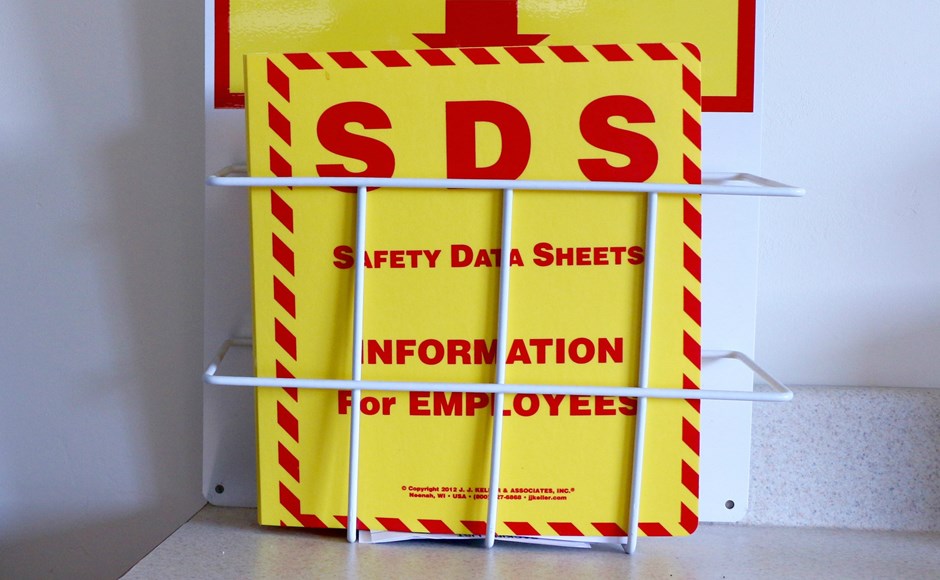Hazard Communication
5 min readAs an employer, you have a responsibility to ensure your workers are aware of the hazards they come into contact with and are equipped the knowledge and resources to manage them. Part of that is adhering to OSHA’s Hazard Communication Standard (HCS), which helps ensure that all chemical hazards are properly classified and communicated to management and workers alike.
Of course, hazard communication protocols are only helpful if they are understood and followed, so let’s take a look at some of the key components of this standard.
What Is Hazard Communication?
Hazard communication is the process of ensuring that the hazards related to all chemicals produced by or imported into the workplace are properly evaluated and communicated to employees who may come into contact with them.


Why is this important? Under OSHA regulations, both employers and employees have the right to know which hazards they may be exposed to and what precautions they can take to protect themselves. Hazard communication facilitate this by standardizing the labeling of chemical products.
Understanding OSHA’s Hazard Communication Standard
The HCS provides a single set of criteria for classifying chemicals based on their health and physical hazards. The hazards are communicated to users though container labels and Safety Data Sheets (SDS) that follow a standardized format.
The SDS format has 16 user-friendly sections consistent across all chemical classes. Sections 1-8 address:
- General information about the chemical
- Hazards
- Safe handling practices
- Emergency control measures
Sections 9-16 cover additional technical and scientific information, including physical properties, chemical properties, and exposure control information.
The standard is in place to create a harmonized system for defining and communicating chemical hazards across the workplace. But it also helps streamline workplace safety and training programs. No matter which company you work for, hazard communication follows the same principles and labeling.
OSHA has made their position clear: employers using hazardous chemicals must ensure that the work facilities have the most recently updated safety data sheets available to workers. They also require employers to prepare and implement a written hazard communication plan, which helps ensure a coordinated approach to complying with this standard.
In practice, the HCS helps employees complete their work tasks safely and more efficiently. The chemical labels, for example, are used to:
- Ensure proper storage of hazardous chemicals
- Determine appropriate first aid based on the hazards of a particular chemical
- Identify various hazards based on the pictograms on the label
Implementing a Hazard Communication Program
To be fully compliant with OSHA’s regulations, employers must create and implement a written hazard communication program. They recommend following the following steps.
1. Learn the Standard and Identify Key Staff
You should have a full understanding of what OSHA’s HCS requires and the individuals in your business who are responsible for activities related to it.
2. Prepare a Written Hazcom Program
The written program must detail how hazard communication will be addressed at each worksite. It should include:
- An inventory of all hazardous chemicals
- Labeling procedures
- Procedures for maintaining Safety Data Sheets
- Procedures for providing employees with relevant information
3. Ensure All Chemical Containers Are Labeled
While chemical manufacturers, distributors, and importers are required to label all shipped containers, it’s still important to cross-check your inventory to ensure every chemical is correctly labeled. If labeling is done in-house, double check that you are following the correct format.
Labels must include:
- Product identifier
- Signal word
- Pictograms
- Hazard statements
- Precautionary statement
- Contact information for manufacturer/distributor/importer
4. Maintain Safety Data Sheets
Every hazardous chemical in the workplace must have an accompanying SDS that is accessible to employees. Suppliers should send these Safety Data Sheets automatically, but if you don’t receive one then you must request it immediately.
If you use an electronic SDS system, note that OSHA requires you to keep hard copies in case of a power or equipment failure or an emergency.
5. Inform and Train Employees
All employees must be trained on the hazardous chemicals in their work area before beginning their tasks (we’ll return to this subject below).
6. Evaluate and Re-Assess the Program
Every hazardous communication program should be evaluated on a regular basis to ensure that it remains current and relevant. When conducting an assessment, take particular note of changes, such as new chemicals and hazards.
The Importance of Employee Training
We cannot overstate the importance of providing adequate training when it comes to hazard communication. You must ensure your employees receive comprehensive training and possess the knowledge and understanding necessary to safely carry out their jobs, and that includes being able to understand and act upon the information provided on Safety Data Sheets.
To this end, OSHA requires that employee hazcom training include a number of specific topics:
- How to detect the presence or release of hazardous chemicals in the work area
- Measures employees can take to protect themselves from these hazards
- Details of the employer’s hazard communication program, including:
- Explanation of the labels on shipped containers
- The workplace labeling system
- Safety data sheets
- How to obtain and use the appropriate hazard information
Training on specific shipped container hazard labels should include a complete overview of the six standard elements on the label:
- Product Identifier: how the hazardous chemical is identified
- Signal Word: indicates the severity of the hazard
- Pictograms: indicate the health, physical, and environmental hazards
- Hazard Statement(s): describes the nature and degree of the hazard(s)
- Precautionary Statement(s): explain measures that should be taken to prevent ill effects from exposure to chemical or improper storage and handling
- Name, Address, and Phone Number of the chemical manufacturer, distributor, or importer
Hazcom training should keep employees engaged to encourage maximum information retention, so it’s a good idea to use a variety of different teaching methods. Consider audio-visual materials, classroom instruction, and interactive videos. Make sure there is ample time for employees to ask for clarifications, and include a question and answer period.
Employees must receive the training when they are initially assigned to work with a hazardous chemical. Additional training must be completed whenever a new health and safety hazard is introduced to the work area. Refresher training is also a good idea, and employers may wish to consider providing this on an annual basis.
Conclusion
Year after year, the Hazard Communication Standard is included in OSHA’s top 10 safety violations across all industries. Not only is this costly in a financial sense, but it also has an impact on employee safety and morale.
Implementing a hazard communication program is the best way to prevent injuries and illnesses resulting from chemical hazards. And it’s not difficult to do. By following the steps outlined in this article, you’ll be empowering your workers to take chemical safety into their own hands.




1 thought on “Hazard Communication”